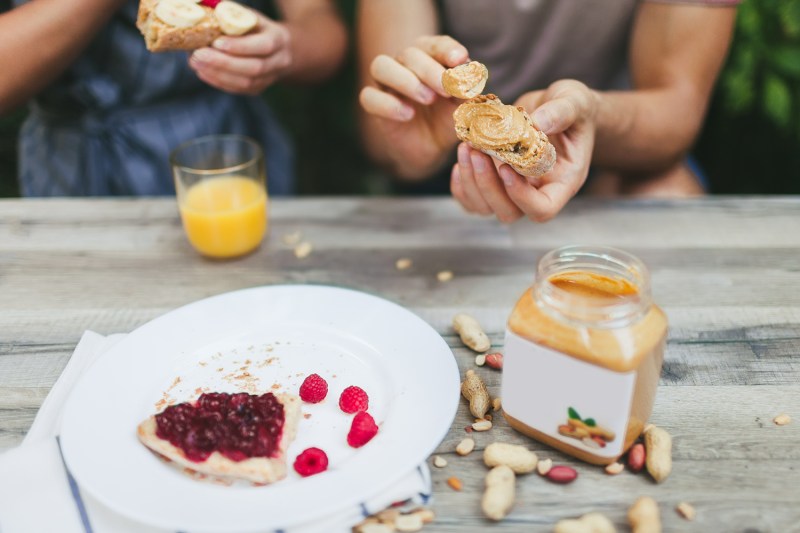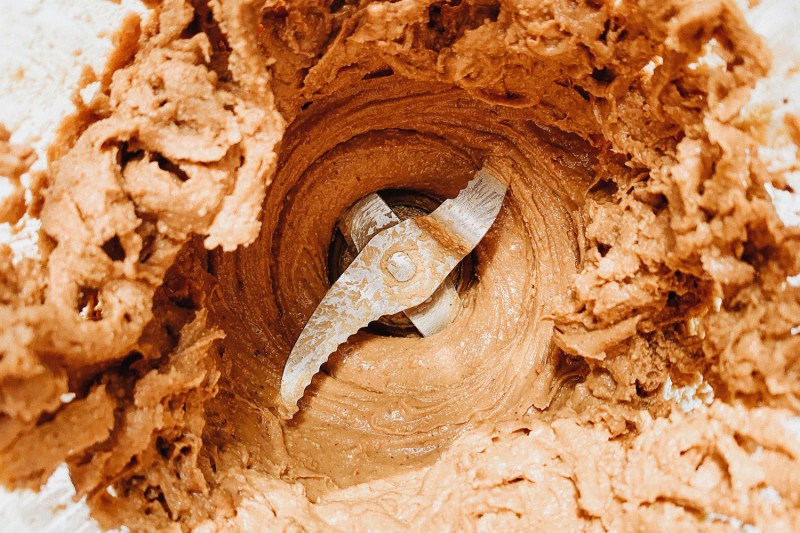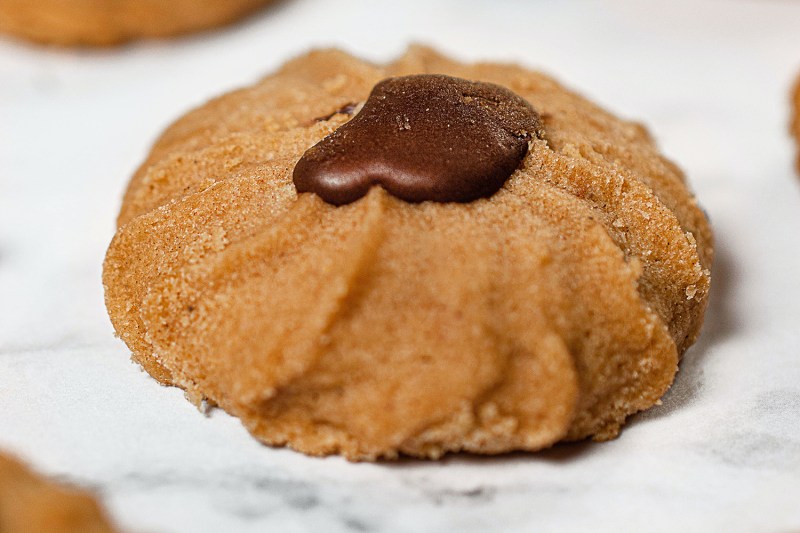When many grocery shoppers (myself very much included) mention “regular” peanut butter, they’re referring to the mass-marketed, undoubtedly processed but still completely delicious jarred stuff that’s widely available, reasonably priced, and beloved by sandwich-toting schoolkids, college students in need of a low-maintenance snack, and grown adults who still have a soft spot for the Jif and Skippy of their youths.
But if your grocery excursions frequently take you to organic markets or to Whole Foods (or you’re ordering online), then you’re undoubtedly well-aware of “natural” peanut butter, a product famous for its lack of artificial ingredients or preservatives (most contain only peanuts and salt).

These two peanut butter styles feature drastically different textures and flavor profiles, but from the perspectives of professional chefs, can one be considered “better” than the other? And, for that matter, is it ever worthwhile to scrap peanut butter shopping altogether and make your own from scratch? We collected peanut butter opinions from seven chefs and discovered that there’s really no consensus on this subject, but our contributing experts offered up plenty of rationales for their own positions, which exemplify the liveliness of the “regular” vs. “natural” peanut butter debate.
If you’re looking for actual peanut flavor, go with a natural peanut butter.
First, a piece of information unlikely to shock anyone: Natural peanut butter has a more authentic and prominent peanut flavor than its processed equivalent. “ Natural peanut butters, have way more peanut flavor when it comes to cooking. The reason is they do not include additives like sugar, non-peanut oils, and emulsifiers. When cooking, you always want to be in control of what you’re adding, and when you use regular peanut butter, it might be bringing extra sugar to a sauce or a marinade that you don’t want. These additives dilute the peanut flavor and can actually change the texture or volume of a sauce. For instance, a savory peanut sauce can be ruined by too much sweetness when [you’re] trying to get a big peanut flavor,” explains chef and chief coaching officer Ken Immer of Culinary Health Solutions.
Chef Melissa Eboli of Via’s Kitchen agrees, adding that “when it comes to peanut butter, I am all about clean ingredients. I prefer organic as much as possible. I typically get my crunchy PB with only two ingredient: peanuts and sea salt. Some brands I tend to purchase include Brad’s, Mara Natha, Once Again, or Trader Joe’s in-house brand.”
Homemade peanut butter isn’t as difficult as you might expect, and it’s worth the effort.
If you’re a true peanut butter purist and want to exert the ultimate control over the contents of your sandwich spread, then you may wish to consider making your very own PB. Many peanut butter enthusiasts feel intimidated by the prospect of the DIY method, assuming that properly made peanut butter requires special equipment. However, celebrity chef and cookbook author Rocco DiSpirito is here to dispel that belief: “[Peanut butter] is very easy to make! All you need is a strong blender.”

Founder and baker Greg Rales of Red Gate Bakery in New York City co-signs DiSpirito’s “peanut butter is easy to make” statement, telling us that “there are a few processes that boast mythical barriers of entry for good reason: Making your own ice cream, preparing a wedding cake, butchering a whole pig, etc. Making your own peanut butter should not be one of these! All you need is a blender and some peanuts, and if you’re feeling fancy, some flaky sea salt. I find homemade peanut butter to be infinitely richer than the store-bought variety, and that’s mainly due to the fact that you are controlling everything that goes into it. Depending on how long you blend it, along with the addition or omission of some extra oil, you can control the texture and flavor quite easily. Long story short, I love making all kinds of nut butters, and the only special equipment you need is a blender.”
Making your own peanut butter lets you adapt the product to your liking, but be prepared to make adjustments when using it in recipes.
Cofounder Jess Dang of Cook Smarts definitely sees the value in homemade peanut butter, but with a small caveat for those who want to use their own PB as an ingredient in cooked dishes: I do think you have the most control of taste using your own homemade peanut butter because no sugar or salt has been added. That said, most [published] recipes are assuming that you’re using a commercial peanut butter, so if you’re subbing with a homemade one, you’ll likely need to adjust the sweetener and salt on your own.”
Regular peanut butter benefits from familiarity and consistency.
Yes, natural and homemade peanut butters possess more health-related merits than their processed cousins, and their peanut-forward flavor earns them major points among those who cherish that very particular taste. However, nostalgia value goes a long way with many diners, and in that aspect, it’s next to impossible to beat the classic jarred supermarket brands out there.

Assistant chef Ryan Marinho of Eastern Eye Balti House in London, who considers Marks + Spencer’s store-brand smooth peanut butter his personal favorite, states that, at his restaurant, “we prefer using regular-type peanut butter, as not every customer likes the taste of natural peanut butter, and we had experienced several issues with customers when we experimentally used natural peanut butter in our restaurant.”
Chef, culinary educator, and recipe developer Tracy Wilk feels that the appealing familiarity of regular peanut butter holds special significance where sweet treats are concerned: “I prefer regular peanut butter when I am doing baking projects such as making a peanut butter ganache for a filling for homemade ‘Reeses’ or macarons. The mouth-feel and texture is so important to a dish like that. I always say if you are looking to get that Reeses cup taste, you gotta use ‘the good stuff’ that we all grew up on!”
Regular peanut butter is a “safer bet” for most baking efforts.
Speaking of baking projects, Rales generally recommends regular peanut butter for these pursuits, telling us that “for most baking excursions, processed peanut butters are the safer bet. They’re treated with additional oils and sugars which keep them homogenized (hence no stirring necessary when you crack open a can of Jif), and that will keep everything consistent when baking with them.” He does mention that natural butters can be included in a batter mixture, since baking temperatures will keep the pastry from experiencing textural inconsistencies due to the butter. However, “if you’re making a buttercream, you may realize that if you’re using a natural butter, your peanuts and oil may start to separate after your cake has been out for an hour.” If you’re at all in doubt, just know that regular peanut butter is always a reasonable move for baking purposes.



